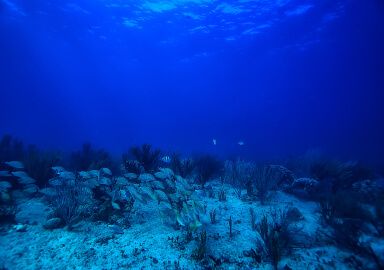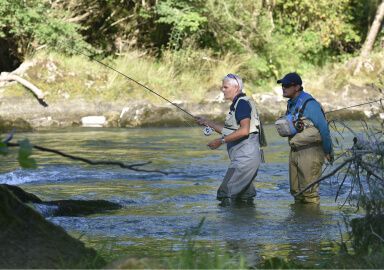Atlantic Croaker
The Atlantic croaker is a medium-sized marine coastal fish of the cooler areas of the western Atlantic Ocean.
View 2 listings
2
listings
US $350
price starting from
2
countries
5816km
to the nearest trip
Where and When?
The Atlantic croaker is found along the western Atlantic shore in waters from very shallow down to about 100 m (328 ft.), from Massachusetts in the north to the northern Gulf of Mexico and parts of the Caribbean Sea. Further south they are also found along the shore of Brazil and Argentina. The species prefers shallow waters with sandy or muddy bottoms. Small specimens are usually found in estuaries and bays for their first few months while adults enter bays, such as Chesapeake Bay, in substantial numbers from March to late October.
They are a “demersal” species, usually staying close to the bottom and feeding mostly on the substrate. Atlantic croakers begin life in sheltered inshore waters then seasonally move offshore to return annually to spawn. No major north or south migrations have been noticed but abundance can vary markedly from year to year. It is easiest to catch the species as the temperatures rise during spring and summer in the inshore areas. They can, however, still be caught, with a little more effort and a better boat, in suitable areas offshore where there is good feeding.
About Atlantic Croaker
The Atlantic croaker (Micropogonias undulatus) is a popular fish that humankind used as food from earliest records. Recently it has become popular with recreational anglers, as its flesh is tasty and it is reasonably easy to catch. This species is related to the drums, silver perch and weakfish. It is called “croaker” because it makes a reverberating sound by vibrating certain muscles against its swim bladder. The Atlantic croaker is reputed to be the “noisiest” of the croakers.
This species is silver or grey above, with paler bellies. However, around its August to October breeding season, it turns golden, and is thus often referred to as the “golden croaker”. Atlantic croakers have elongated bodies and small mouths, with no sharp teeth. They feed mostly on worms, crustaceans and occasionally small fish. Maturity is reached at 2-3 years and 45-50 cm (18-20 in.) with a maximum size of 69 cm (27 in.) and 3.6 kg (8 lbs.). Sexes are alike and the species can be found in considerable numbers in suitable areas.
How to Catch?
In the right time and the right place, the Atlantic croaker is among the easiest of fish species to catch, and is thus excellent for young or new anglers. The tackle can be very simple and inexpensive; regular bass fishing equipment works well. In the warmer months, when the fish are close inshore, they can often be caught from the shore, a pier or with a small boat and can be caught throughout the year. Spinning slowly with jigs or plastics can work but, as the fish are usually almost on the bottom, rocks and branches can be problematic.
Most anglers prefer light spinning tackle and use various kinds of natural bait found in the area. Fish tend to become active at around 60 degrees and most active at above 75 degrees. Favoured baits are live worm, shrimp or crab, or these dead plus cut fish, clam or other shellfish. The bait should be cast out, using a small weight, and left on the bottom. Drift fishing from a boat can work well and a rig of two circle hooks is popular and effective, leaving the fish to hook itself. There are no “monster” Atlantic croakers, but a good specimen can be fun and exciting to catch and then make an excellent meal for the family.






